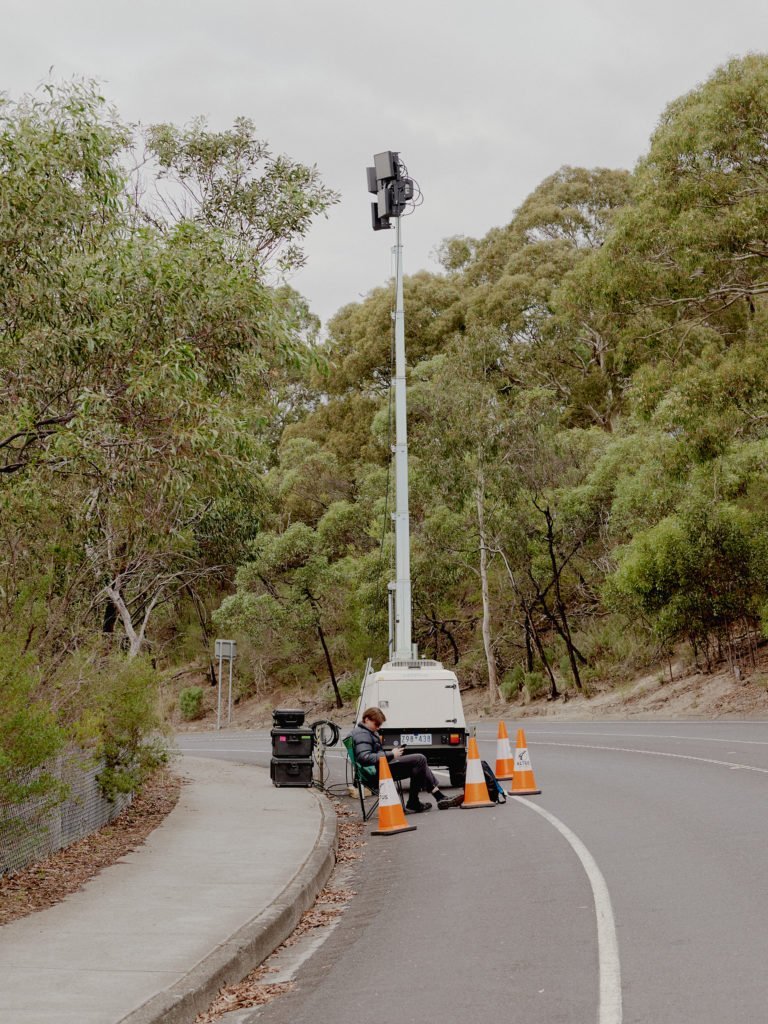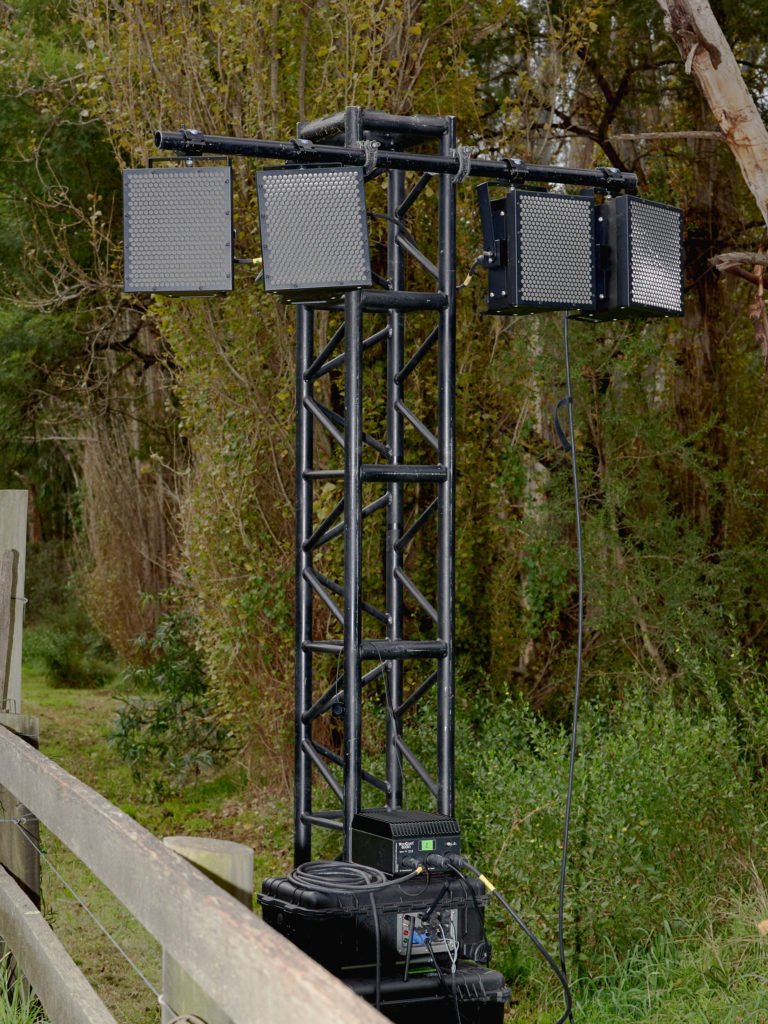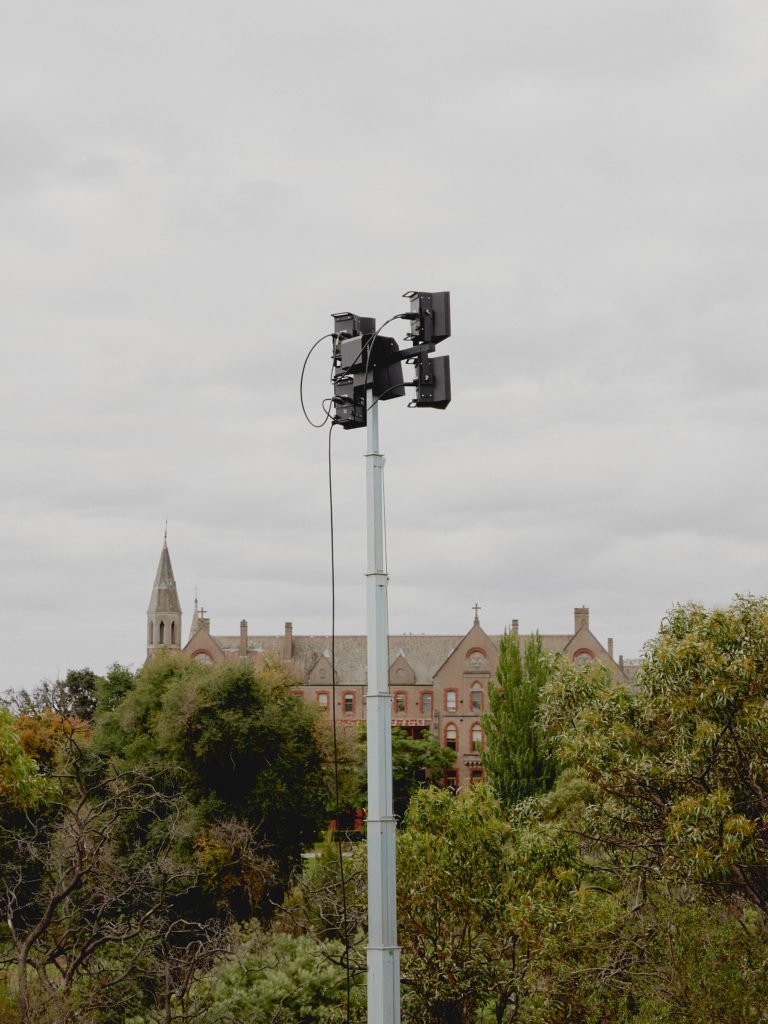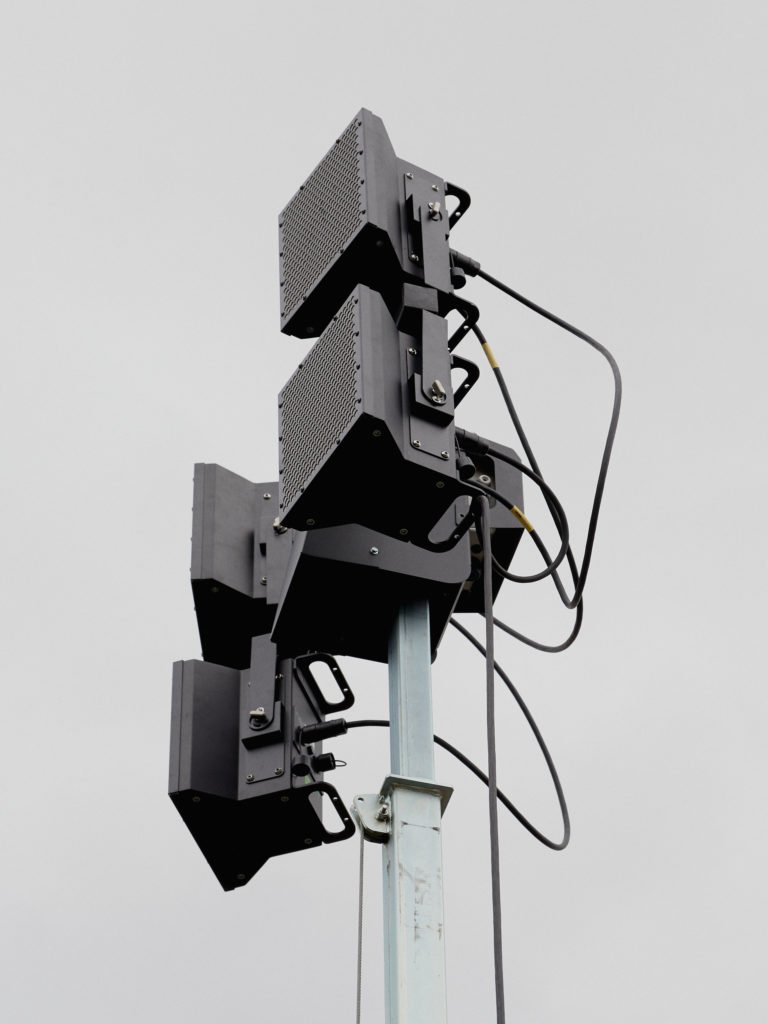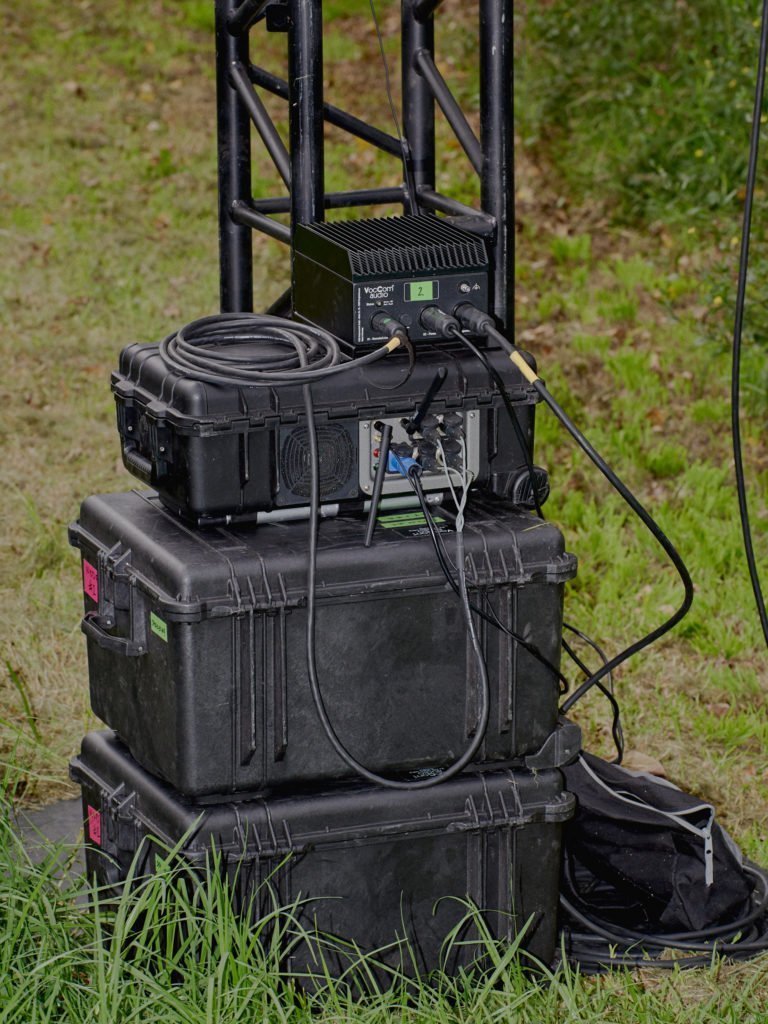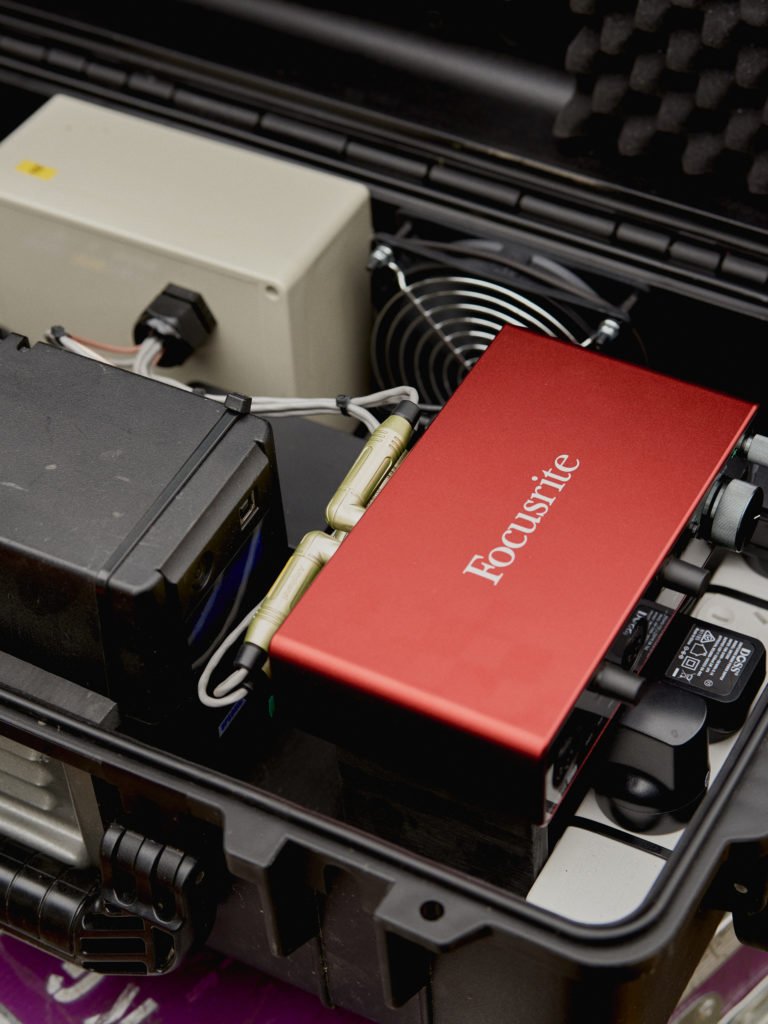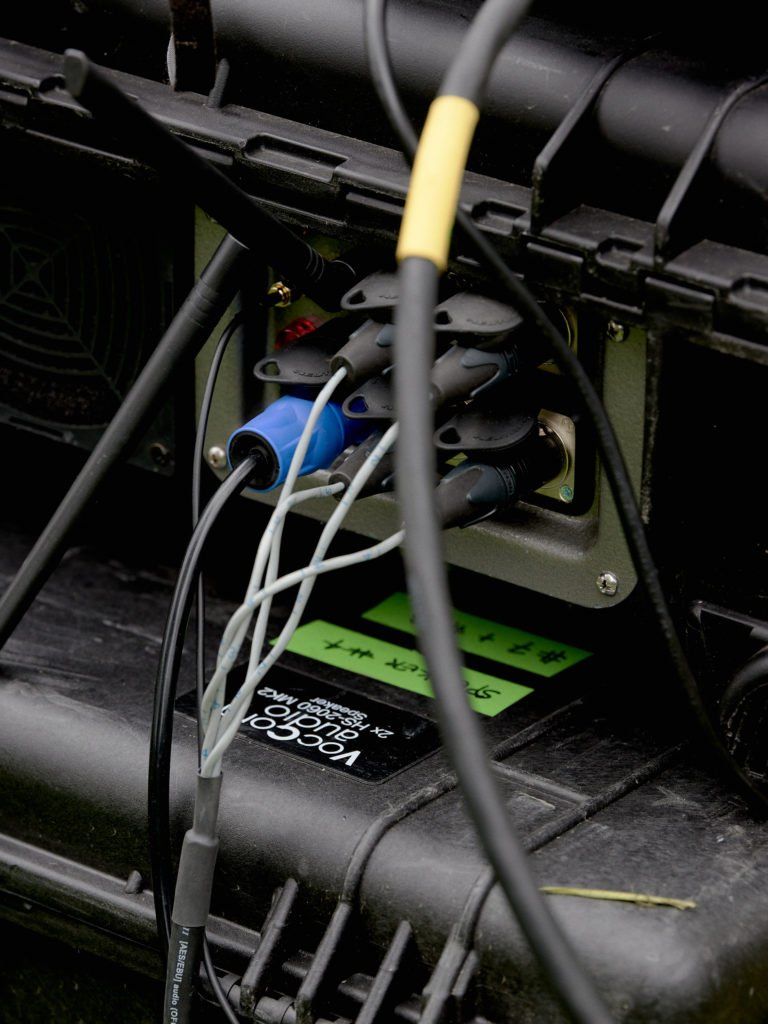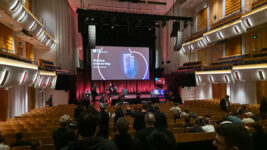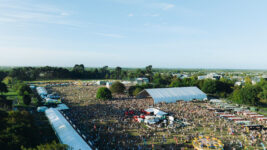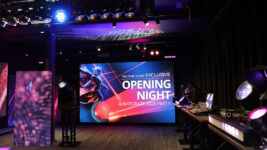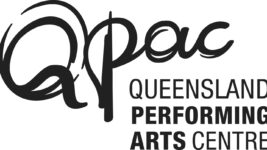News
26 Oct 2021
The Rivers Sing
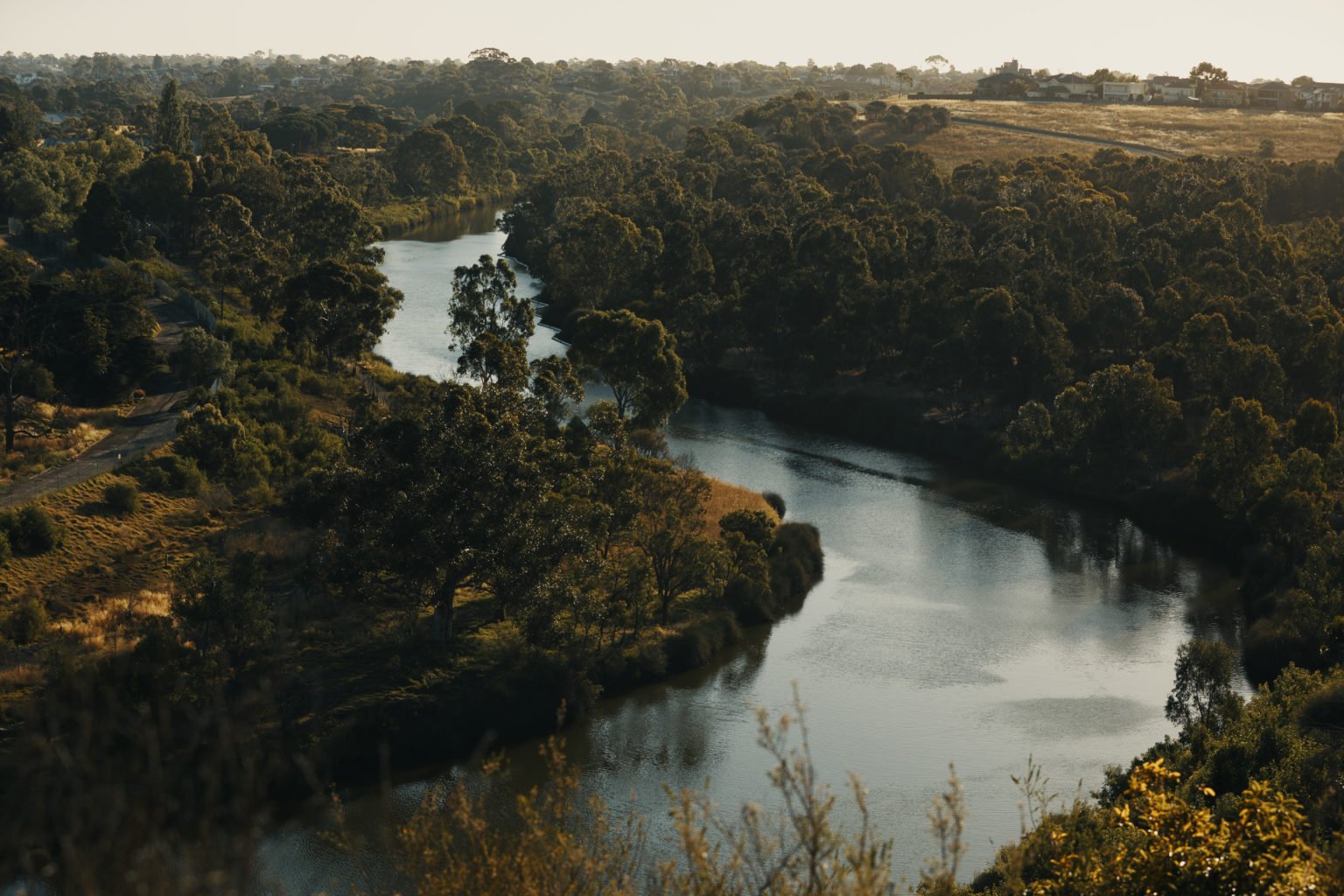
Subscribe to CX E-News
The Rivers Sing is monumental environmental sound work created for the inaugural Rising Festival in Melbourne.
Despite the shutdown of Rising due to Lockdown #4 in late May, The Rivers Sing was one of the few works that was allowed to be presented as scheduled. A collaboration between composer Deborah Cheetham AO and sound artists Byron J Scullin and Thomas Supple, with technical contributions from Joe Talia, MORE Studio, and Jason Read’s Optical Audio, the work travelled down both the Birrarung and Maribyrnong rivers over six weeks, before converging at Birrarung Marr in Melbourne’s CBD.
I had the fortune to experience The Rivers Sing at one of its many stops along the Maribyrnong River, specifically at Lily Reserve in Essendon West, overlooking the derelict Maribyrnong Defence Site. I had not experienced one of Cheetham, Scullin and Supple’s large-scale sound works before, which have been presented at Hobart’s Dark MOFO and Perth Festival, as well as in London and Dusseldorf. The effect was extraordinary. At the appointed time, voices came from everywhere. It was like the sky was singing and the landscape was talking. In 30 years in audio, I’ve never heard anything like it. It felt like it enveloped an entire suburb.
After picking up my jaw off the floor, I immediately started looking around trying to figure out how they’d achieved such an extraordinary result. Behind me on the reserve was a portable winch-up system with eight or so small speakers of a design and brand I’d never encountered. Looking down into the river valley, which falls suddenly and steeply away from the reserve, I saw two pontoons in the river, with similar looking arrays of speakers. It was hard to tell though, because each speaker array was several hundred metres away from each other, forming a triangle. No audio product I am familiar with could have done what I had just heard. I had to talk to the creatives…
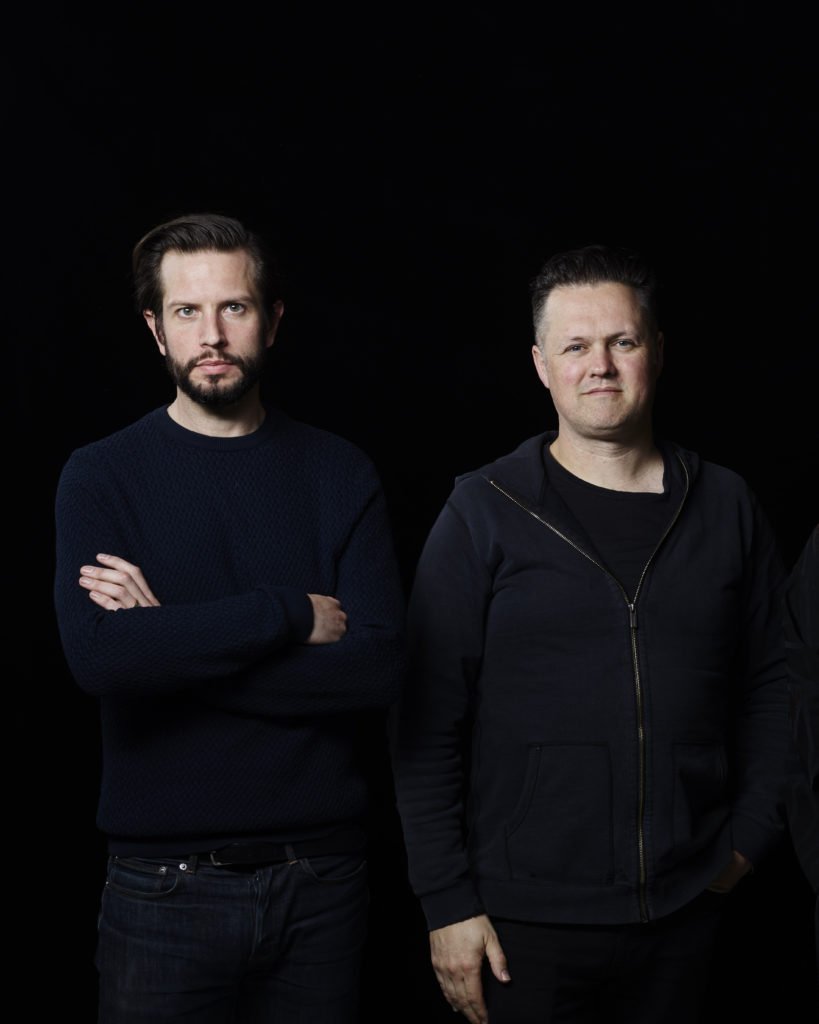
Thomas Supple and Byron J Scullin 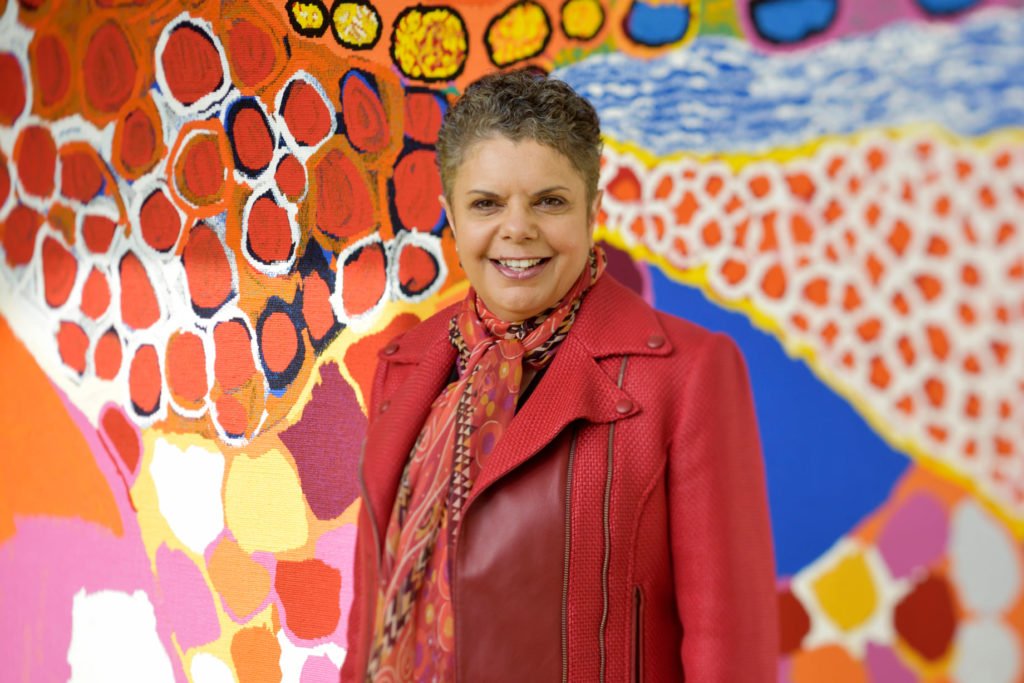
Deborah Cheetham AO
Creation – Connection to Country
“The Rivers Sing seeks to reframe our relationship with the two major rivers that pass through Melbourne,” explains Byron J Scullin. “Deborah Cheetham is the source of inspiration. Beginning with her own connection to our waterways, combined with language and knowledge granted by Boonwurrung and Woiwurrung Elders, the work seeks to embody ideas found in the ongoing connection between water, Country and people.”
The Rivers Sing follows on from Siren Song, created by Scullin and Supple with fellow collaborator Hannah Fox, a large scale outdoor sonic artwork that fills the sky of a city. It was presented at Perth Festival and Dark MOFO in Hobart, and used hundreds of TOA horns mounted on buildings, and a helicopter which would fly over the city during the performance. Siren Song itself followed on from Bass Bath at an earlier Dark MOFO, which was created with 22 dual 18” d&b audiotechnik subwoofers in a disused cool store. The idea of Bass Bath was to experience sound as a physical force on the body, instead of a heard phenomenon. This led to the idea of Siren Song; standing outside and being enveloped by a huge field of sound.
“The Rivers Sing began life when Rising Festival approached us about creating a work,” continues Byron. “Deborah is a Yorta Yorta woman for who the Tongala (Murray) River holds a very important place, both for the community but also personally. Deborah, as a visitor here in Victoria, developed her ideas for The Rivers Sing with permission and advice from the local Woiwurrung and Bowurrung elders, including N’arweet Dr. Carolyn Briggs, whose PhD thesis involved mapping Boonwurrung culture including its relationship to the Birrarung (Yarra). Since colonisation, the Maribyrnong and Birrarung have very different positions in contemporary Melbourne, with the Maribyrnong being the ‘lesser’ of the two waterways. Deborah then explored our connections to the environment and landscape, allowing the research and her unique relationship to speak through a poetic interpretation.”
Deborah prepared musical themes and material for both the Birrarung and Maribyrnong, through a mixture of improvision, and compositional work at the piano and in notation. This material was then taken to other artists, who were invited to respond to it, using structured improvisation and their particular musical specialities. Artists recorded included Jess Hitchcock, Lillie Walker, Carolyn Connors, Dhungala Children’s Choir, Nai Palm (Hiatus Kaiyote), Marita Dyson (The Orbweavers), James Henry, Charles Maimarosia, and Don Bemrose as well as Deborah herself. The results were cut-up like a sample library, in a technique very much drawn from musique concrète. The composition is modular; the parts sit on a hard drive, with different elements chosen to be played back for each performance, running at dawn and dusk. It’s never the same twice.
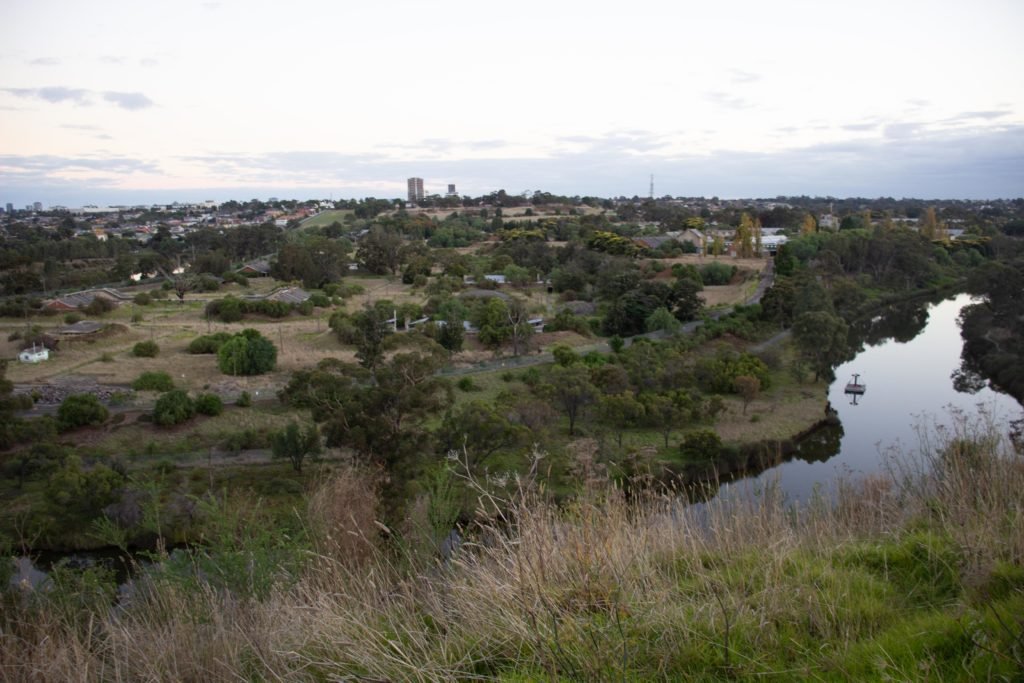
“When you’re dealing with an amplified work at scales this large, you don’t know what effects you’re going to get,” Byron observes. “You certainly can’t use rhythmic material that’s intended to be in sync; anything rhythmic turns into a texture, so that’s a compositional restraint. Deborah, Tom, and I would make educated guesses about what the sounds would do once out in the environment and allow for that in the composition. We’d then go out and listen to the work on site and determine what worked and what didn’t. It’s an experimental work at heart because we’d have a theory, test it, come back with the information, and decide what to modify. It’s like playing with a huge instrument on a 24-hour cycle.”
With sites beginning at the TarraWarra Museum of Art and making their way down both rivers until meeting in the steel and glass of Melbourne, results were always going to be interesting. “The piece interacts with each landscape differently,” confirms Byron. “The Mount Lofty iteration created a reverb that I’ve never heard the like of. It was 12 seconds plus, just echoing off of the landscape. There was something about the depth of the gully and the straight trunks of the trees that created a huge diffusion field. It was like a Brian Eno-esque delay chain which took several seconds to come back; you‘d send out a melody and a counter-melody would come back.”
As the piece made its way down the rivers over six weeks, Thomas, Deborah, and Byron would meet to talk about location, structure, and material for each site. “For each location, we’d discuss the work’s relationship to the river, and what had historically happened there,” illustrates Byron. “Deborah would lead on qualities and sounds. As for where the loudspeakers were located, I began thinking of them as duos, trios, and quartets. We’d establish a compositional intent for each location. I’d then articulate that into the software, go out and listen, and then develop a second or third version according to sound’s behaviour at the site.”
Delivery – So how on earth did they do this?
The technical question for all of Scullin and Supple’s sound works has been; how do you create a sound field that large? While Siren Song was achieved with the brute force of 500 horns and a helicopter, that isn’t always (or ever, really) practical. Byron started investigating a technology he’d heard about; LRADs – Long Range Acoustic Devices.
“I knew about LRADs, and had seen video of them in action,” Byron relates. “A company called Genasys originally developed the LRAD with funding from DARPA for the US Navy, for voice comms and hailing over water. They’re known for being used in protests, for warning tones and notifications. People have suffered adverse effects from that, as they’re outputting 140 to 150 dB. I’d heard a demo of Genasys’s LRADs in Fukushima, Japan, where they’re used for early warning. I thought they would be a great solution, as they’re very small and easy to deploy.”
The original design for Siren Song incorporated the use of LRADs but sourcing them turned out to be nigh impossible. “It’s so contentious,” sighs Byron. “The manufacturers are not interested in dealing with artists; they’re interested in dealing with emergency services, the military, and law enforcement. We called Genasys and they’d literally hang up the phone. I think the reason companies making LRADs don’t want to talk to artists or audio professionals is that there is a certain cache to being a ‘sound weapon’ when talking to police and security. That market knows almost nothing about pro audio. We found when we looked at the build quality of a lot of products in this market, it was pretty bodgy by pro audio standards, but incredibly expensive. The weaponisation of sound is a matter of intent. You can treat any PA as a weapon, really. A huge aspect of this market is marketing and selling to people with little knowledge and large budgets.”
While working in Europe on other projects, an artistic director Scullin and Supple were collaborating with turned out to have a connection to a company called PASS-Medientechnik who make LRAD-type products under the name VocCom Audio. “While we were in Dusseldorf, staff from VocCom drove down with gear to meet us and let us test it,” retells Byron. “After testing and recordings, we decided that their HS-2060 product is what we wanted to use. It’s small, it has 30×60 dispersion and weighs just 5.5kg. It can throw almost a kilometre. This meant our works could go from being done with 500 horns which needed scaffolding, labour, and an entire shipping container to transport, to being 32 HS-2060s speakers on upright winches or ground stacked.”
The VocCom build for Scullin and Supple, who now own the rig, is custom. The HS-2060s are powered by custom made amps, and are connected to a playback system designed by Optical Audio and MORE Studio to their spec. The whole production now fits in a couple of dozen Pelican cases. “The fidelity and build quality of VocCom’s LRAD products are far superior to anything else we investigated,” Byron asserts. “They’re the right people, and really wanted to show us what they could do and the diversity of their technology.”
“The fact that The Rivers Sing can move from place to place every weekend is down to the VocCom products and the portablity of our playback system,” continues Byron. “The whole thing is stable, compact and tight and they can project so far. It’s just voice, just the range from 500 Hz to -5kHz, and it’s perfect for that. The HS-2060s are running 20 to 25 dB below what they can do. If we wanted to, we could really dominate, but that’s not the point. People assume if its military equipment it’s going to be a bombardment, but the work runs not that far above the background ambient noise level. The voice intervenes in the environment for a unique sound experience that is an abstract and poetic reflection of what this landscape represents.”
Playback – Jason Read, Optical Audio
The basis of The Rivers Sing playback node was modelled on a similar control system developed by Optical Audio’s Jason Read as a redundant firing system for the Melbourne’s New Year’s Eve Fireworks.
“The original design was a standalone system that takes GPS timecode, turns that into a Longitudinal Timecode stream which goes into a Mac, gets converted into MIDI Timecode, which then triggers QLab. Most of the components were off the shelf, with some customisation on the GPS conversion. All the systems have 4G modems and uninterruptible power systems. They sync the playback files with Dropbox. This isn’t the first project we’ve used the system for; we’ve been involved with Byron and the team since Siren Song in Hobart.”
The Rivers Sing system is further refined to reduce the physical size of the control system and provide greater flexibility. Based on Pi4 technology, the system is cased up into a lightweight ABS case with a customised I/O panel to travel worldwide. “It’s extremely portable,” says Jason. “You can take it on a plane, and along with the HS-2060 rig, present it to a festival; this is our show. It can be as easy as two cases and some speakers. It’s much easier and more efficient than mounting 100 horns onto eight buildings with amplifiers, rigging, and control loading in over multiple days”
MORE Studio – The Software and Admin Solution
The Rivers Sing system is an integrated hardware and software solution for a multi-location system for audio playback for a large area multi-channel audio artwork, designed and coded by Pete Brundle and James Sandri at MORE Studio.
The system involves isolated speaker nodes each containing a GPS-enabled Raspberry Pi Board Computer that outputs four channel audio to a multichannel audio interface which in turn outputs to the amplifier and speakers.
Each Raspberry Pi Node device is managed on the Balena device control web application and new software can be remotely deployed to all devices via the Balena API.
The software on board the Raspberry Pi uses the GPS hardware to continuously set accurate date-time to the operating system. This allows all nodes to be in sync with each other from a time perspective.
“A separate custom website, the Cue List Dashboard, allows cue lists of audio files matched with play times to be built and uploaded to each node or device,” says Peter Brundle. “We use the Balena API plus a custom Node JS API on the Pi software to communicate directly with the Pis. The Dashboard also allows real-time control over the volume levels of each channel per node.”
A Dropbox folder is connected to the Cue List Dashboard site via the Dropbox API and matches folder names to the names of the Pi devices. Audio files are copied into the folders and are then synchronised to the devices. Note, the device names can be changed on the Balena Dashboard where the devices are managed over the internet.
The Pi software continuously checks the time against the uploaded cue list times and plays the audio file specified for that cue.
Subscribe
Published monthly since 1991, our famous AV industry magazine is free for download or pay for print. Subscribers also receive CX News, our free weekly email with the latest industry news and jobs.

